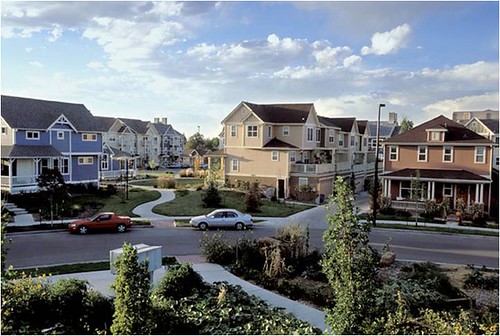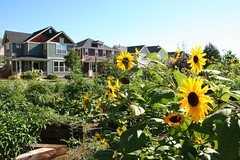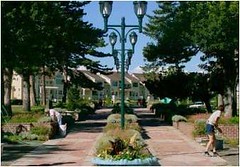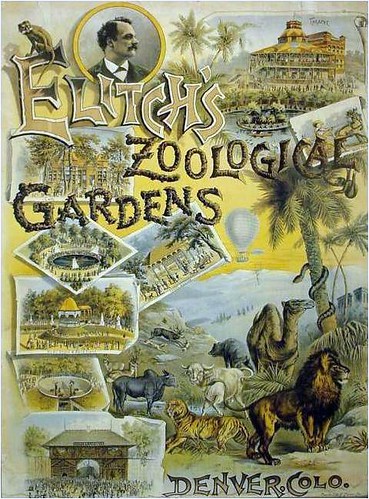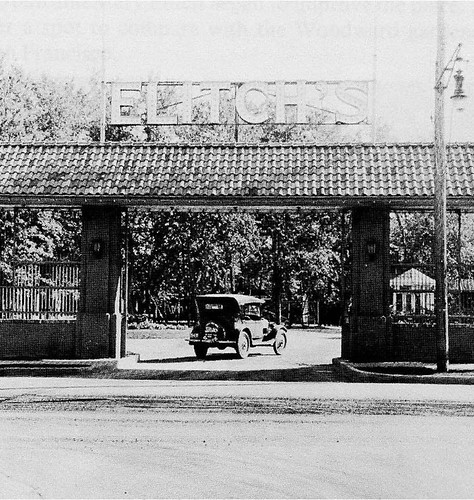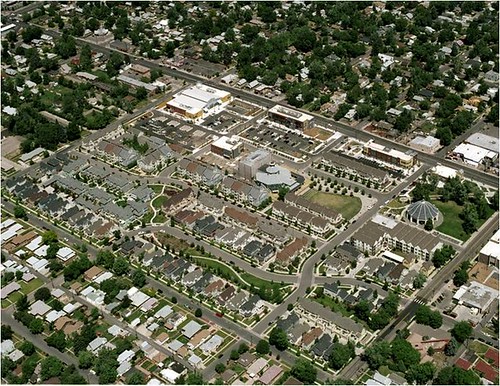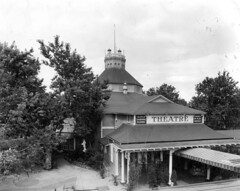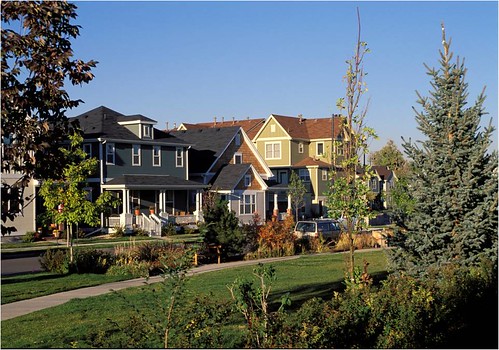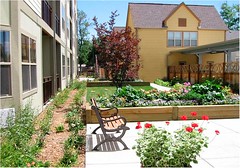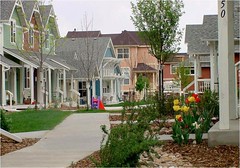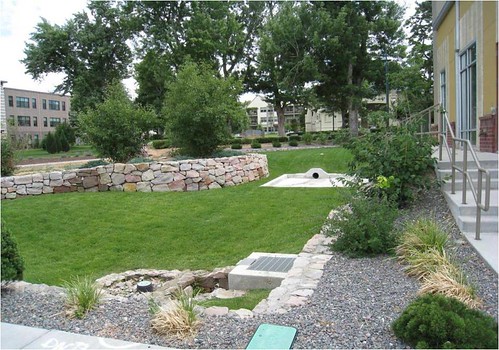A close look at a smart growth icon: Denver's Highlands' Garden Village (Part 1)

Posted July 20, 2010 at 1:31PM
Highlands’ Garden Village (HGV) is the kind of neighborhood development that I want to include in almost all of my presentations, partly because it is truly photogenic and partly because it contains so many of the features that people like me advocate as alternatives to sprawl. Placing some 306 homes, 3 acres of green space, 75,000 square feet of commercial space and 63,000 square feet of civic buildings on 27 redeveloped acres, HGV has it all: diverse and affordable housing; high-end single-family homes; green buildings and landscaping, regular transit service; community gardens; and excellent design.
When my friend Shelley Poticha, now head of sustainability at HUD, was executive director at the Congress for the New Urbanism, she called HGV the best development in America. High praise, and perhaps a bit of hyperbole, but one could definitely make a case for it then, and I think the project has held up well since.
HGV’s site has a rich history. It was once home to Elitch’s Zoological Gardens, a theme park dating to 1890 with zoo animals, amusement rides, big-band dances, a theatre, a roller-coaster, and gatherings that hosted the likes of cowboy movie hero Hopalong Cassidy. The site was abandoned in 1995 when the park relocated to downtown near the Denver Broncos’ football stadium.
Named for the Highlands section of Denver northwest of downtown, Highlands’ Garden Village was developed by Perry Rose, an affiliate of green developer Jonathan Rose Companies (disclosure: Jonathan is a friend and a trustee of NRDC), with site planning by California-based new urban architects Calthorpe Associates. The project cost $108.2 million to develop.
One of best things they did was restore the old Elitch’s theatre, which had fallen into disrepair, so that it now hosts shows and community events, and to preserve the old round carrousel building that now serves as an all-purpose, open neighborhood pavilion set within one of HGV’s park areas.
The housing is diverse in several senses of the word. There are 52 single family homes (large photo below), 20 carriage homes above garages, 38 townhomes and condos, 63 apartments for seniors (below left), 74 rental apartments, 33 homes in a co-housing configuration (below right), and 26 live/work lofts. Twenty percent of the homes were priced to be affordable to households earning 50 percent or less of the area median income. The market-priced single-family homes, townhomes and co-housing units all sold at higher than expected prices. Having a variety of housing types is highly beneficial: it not only allows residents of different incomes to settle in the same neighborhood but also allows residents to ‘age in place’ as their housing needs change over time, without leaving the community.
The development’s site is very good for smart growth performance, not just because of its internal features (which include great street connectivity, too) but also because of its accessibility. One bus line runs right along the north border, taking passengers downtown in about ten minutes, according to Chuck Perry of Perry Rose. There are also two other bus lines within a half mile from the center of the site. (See the blue bus stop markings on the Google Earth image, below.)
Taking the measurement from the center, the neighborhood can boast a ‘very walkable’ Walk Score of 86. According to Walk Score’s database, within a half-mile are also the following:
- 4 food markets;
- 6 restaurants;
- 3 coffee shops;
- 6 bars;
- 3 schools (one of which was built by Perry Rose as part of the development concept);
- a city park;
- 4 bookstores;
- 5 fitness, yoga and dance facilities;
- a pharmacy;
- a hardware store; and
- 8 clothing and music shops.
(See Walk Score map just above.) Commercial establishments come and go, of course, and Walk Score’s information on neighborhood amenities can be out of date. But, still, that’s a lot.
In addition to the use of a redevelopment site, walkability, accessibility, diversity, preservation of historic buildings and efficient use of land, HGV is loaded with environmental achievements and features. Here are some notable ones:
- 30 tons of concrete from Elitch’s were recycled into the HGV street network;
- The Sunflower Market building (the largest on the site) is certified LEED-gold;
- All single family homes exceed Energy Star and Colorado Built Green requirements;
- Multifamily buildings feature recycled materials, low-VOC finishes and energy-efficient conditioning and windows;
- All public buildings and infrastructure are powered by solar or (purchased) wind energy;
- Sidewalk plantings (above left) are xeriscape;
- The community lawn in front of the theatre is planted with native buffalo grass, which requires only one-sixth the amount of water needed by blue grass;
- Mature trees from Elitch’s were preserved.
Not too shabby. Great environmental aspects, and a nice place to live, too. The residents, designers, developers, and city permitting authorities have a lot to be proud of. I think I’ll keep it in my presentations.
Next: Could it have been better?
Move your cursor over the images for credit information.
